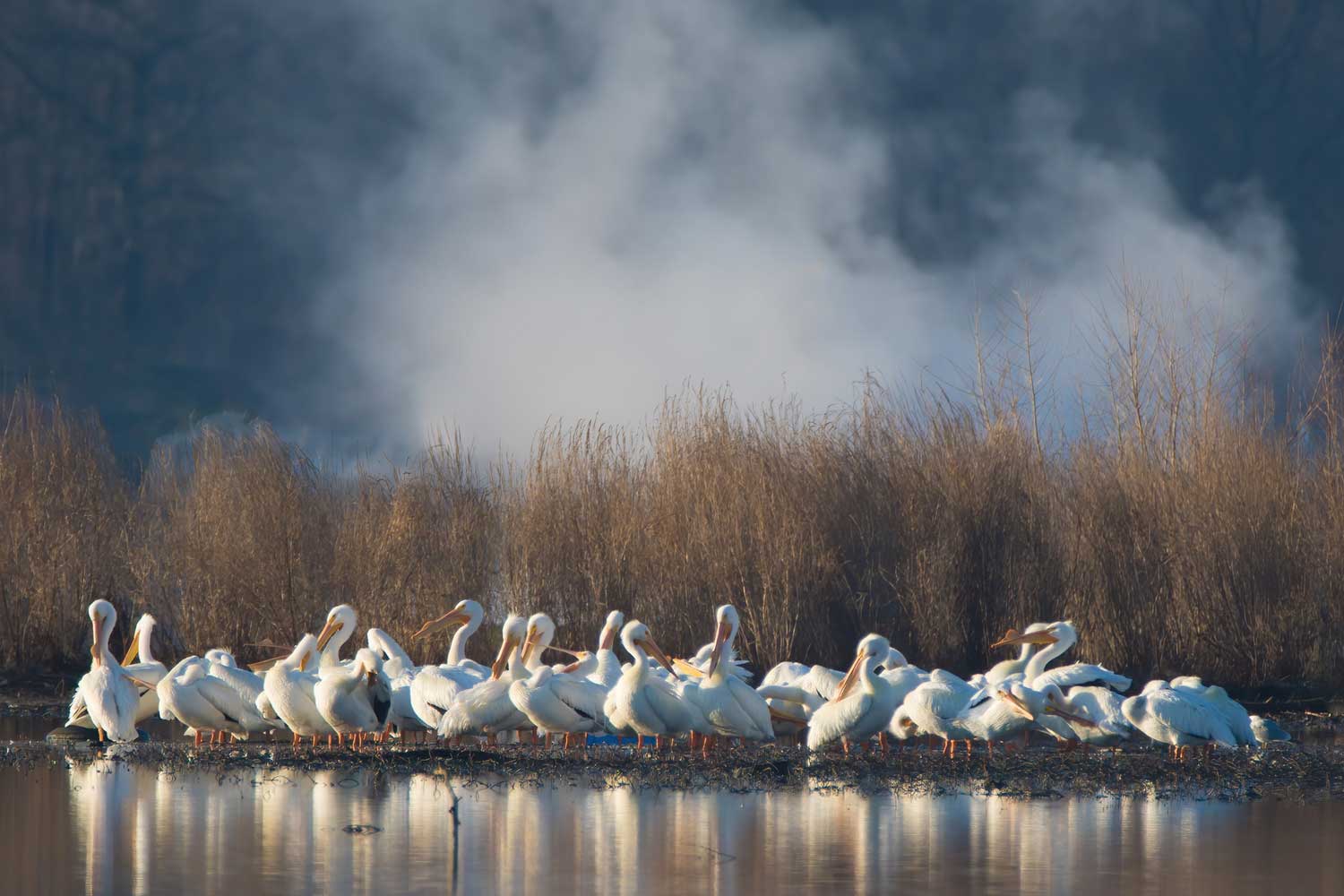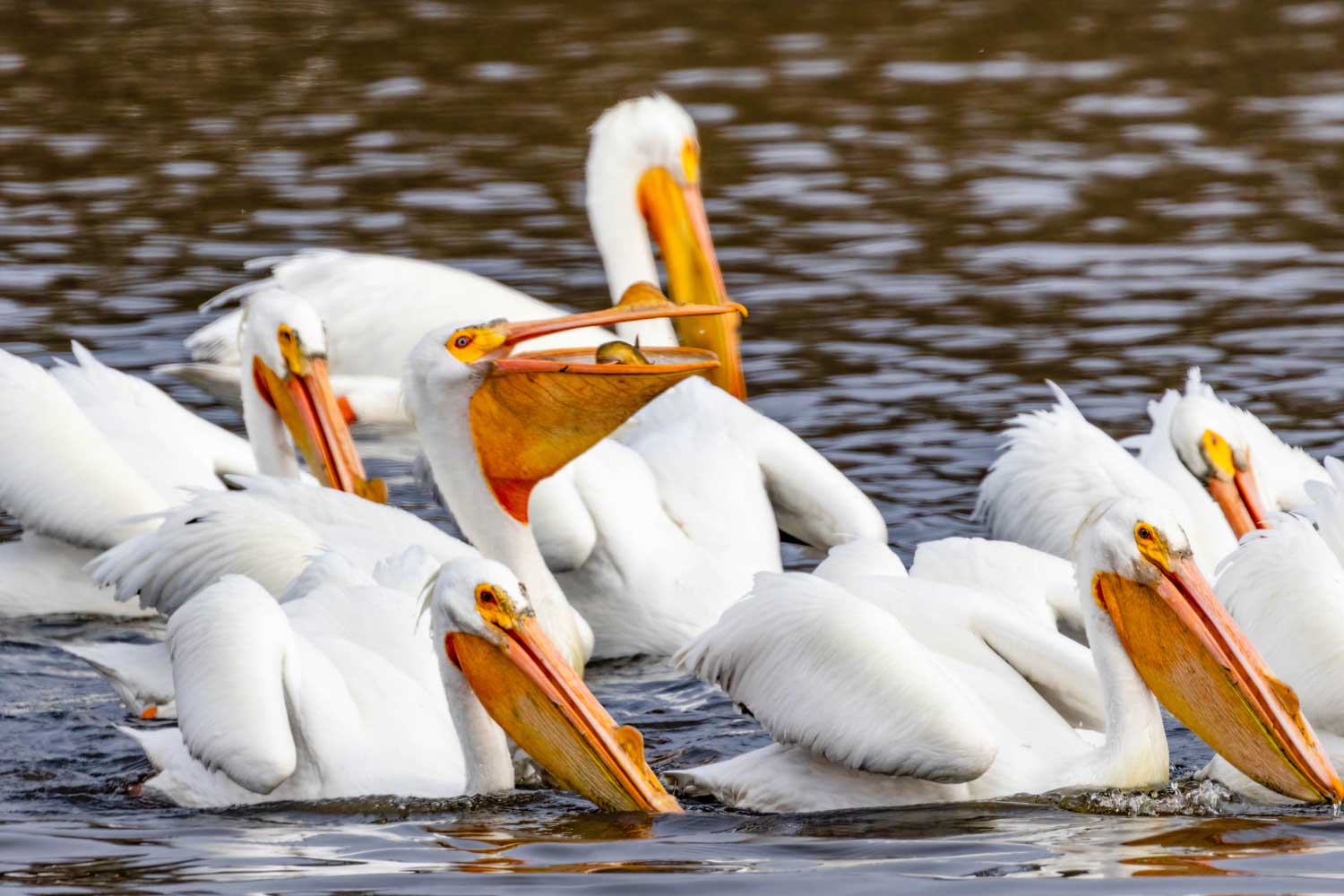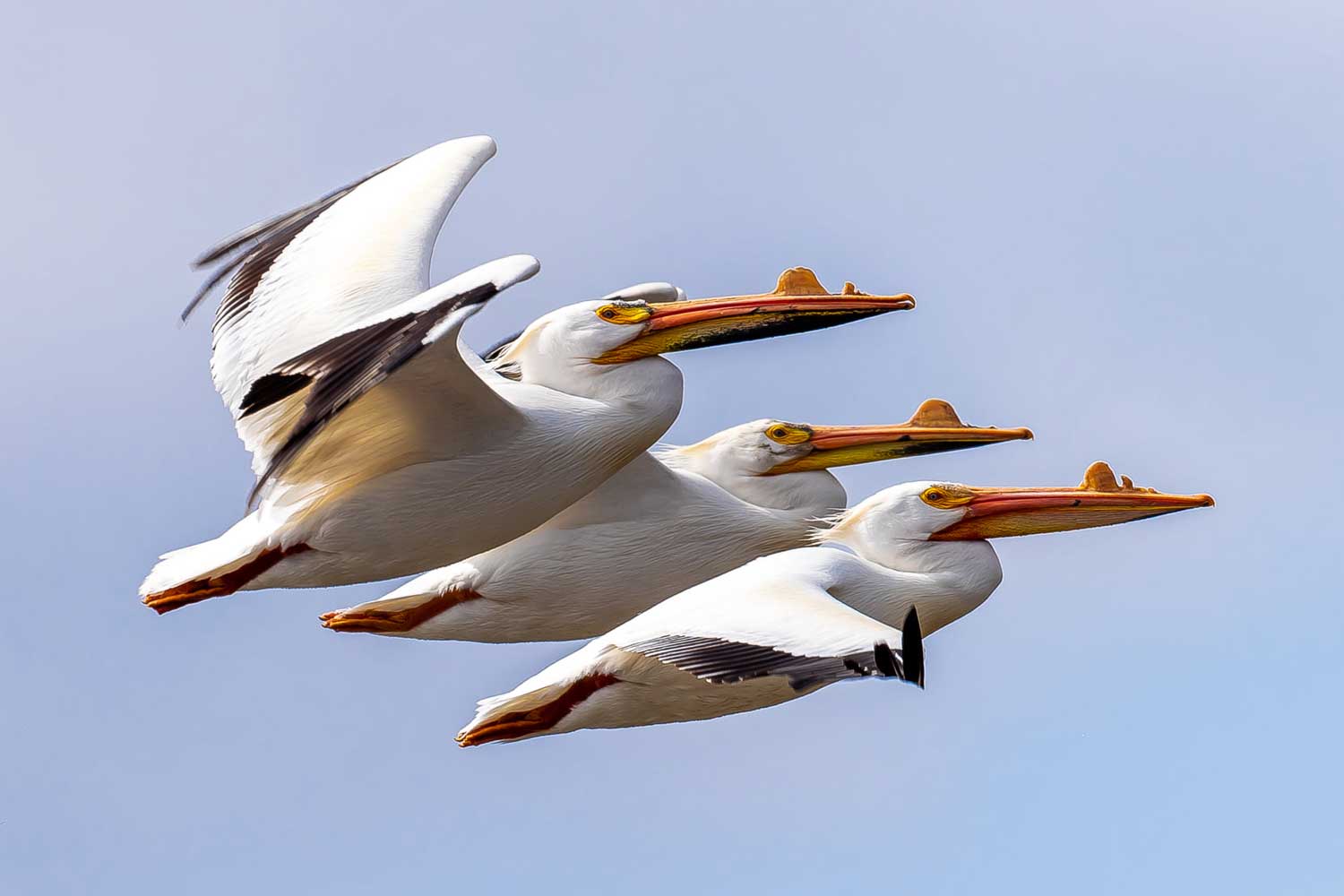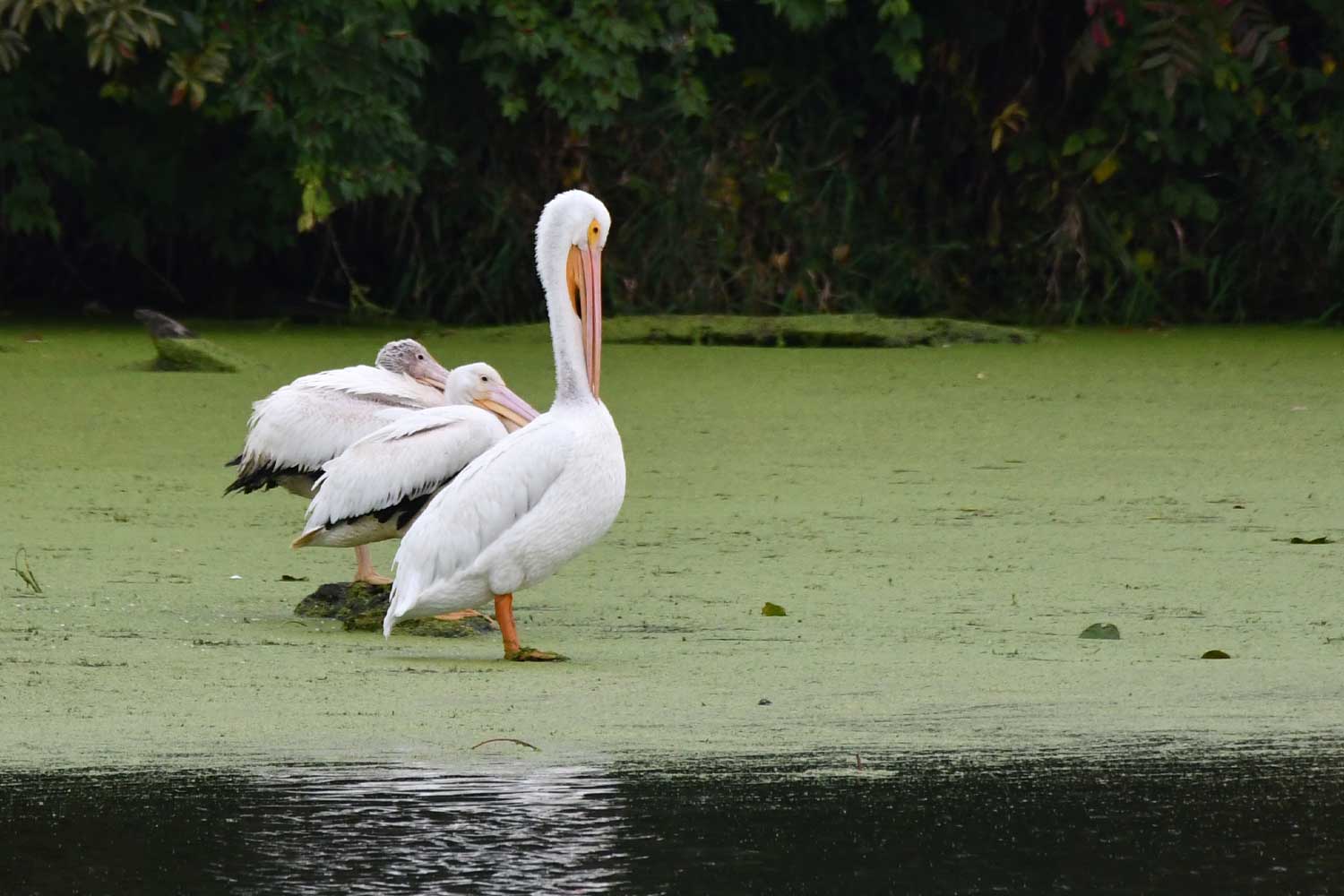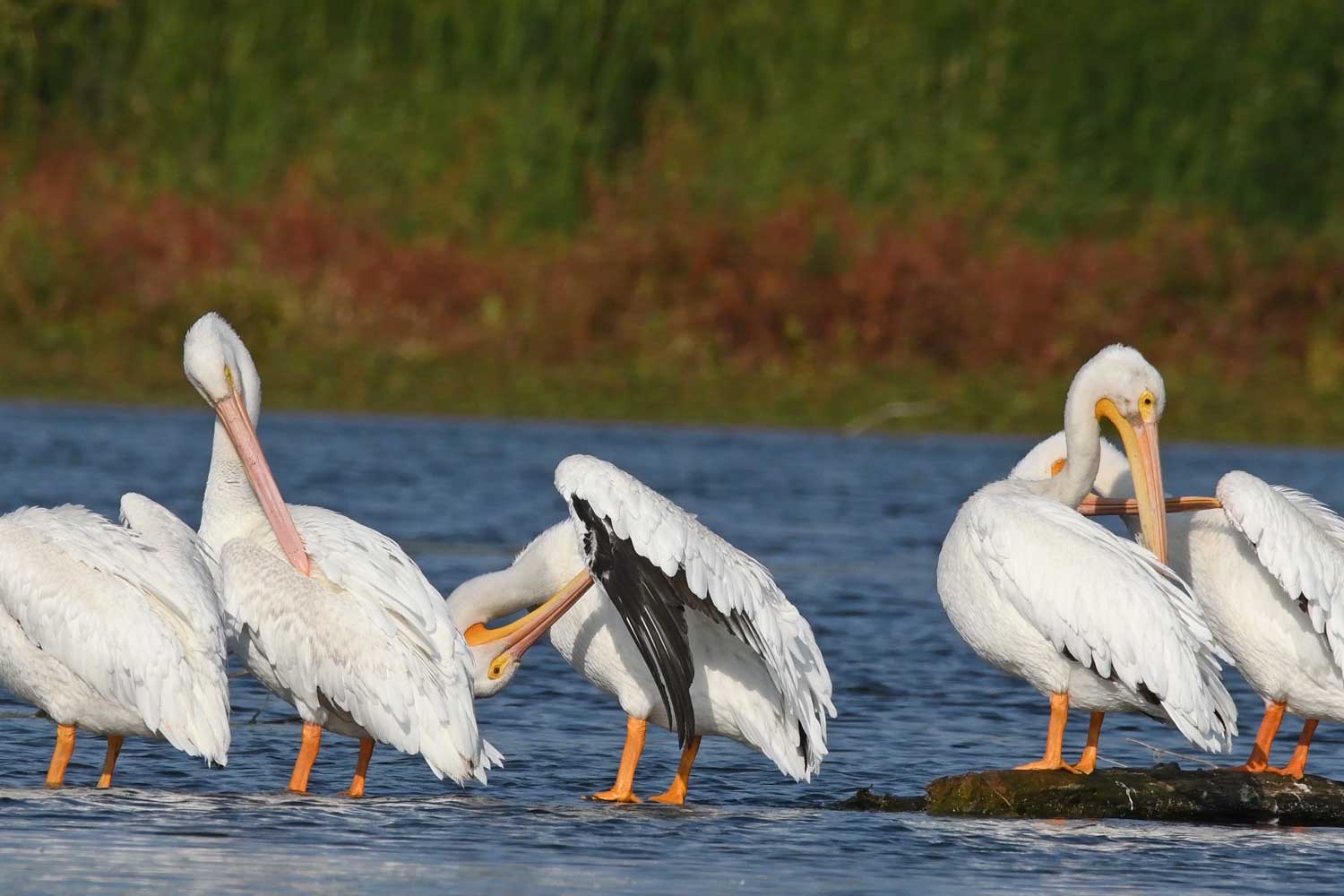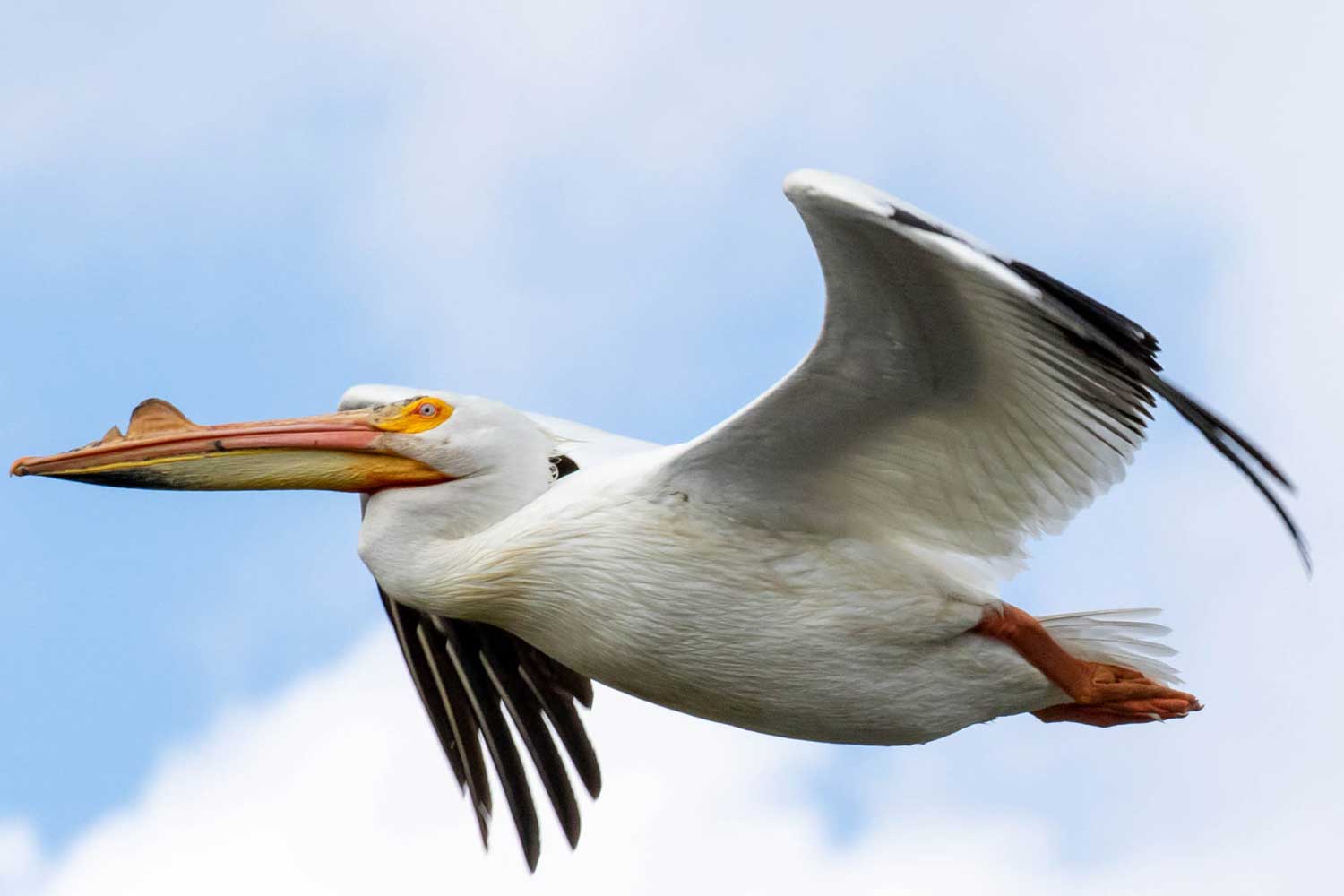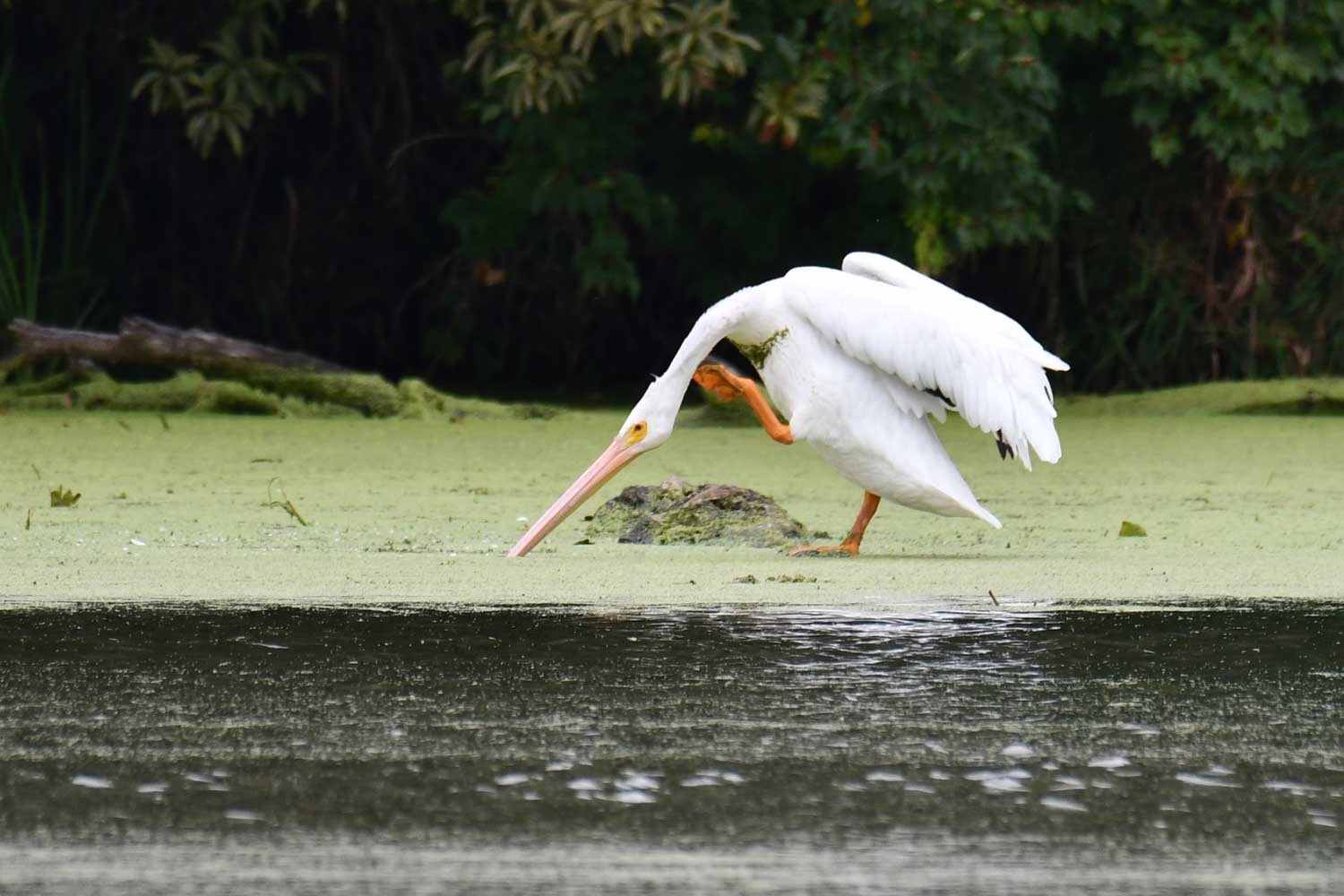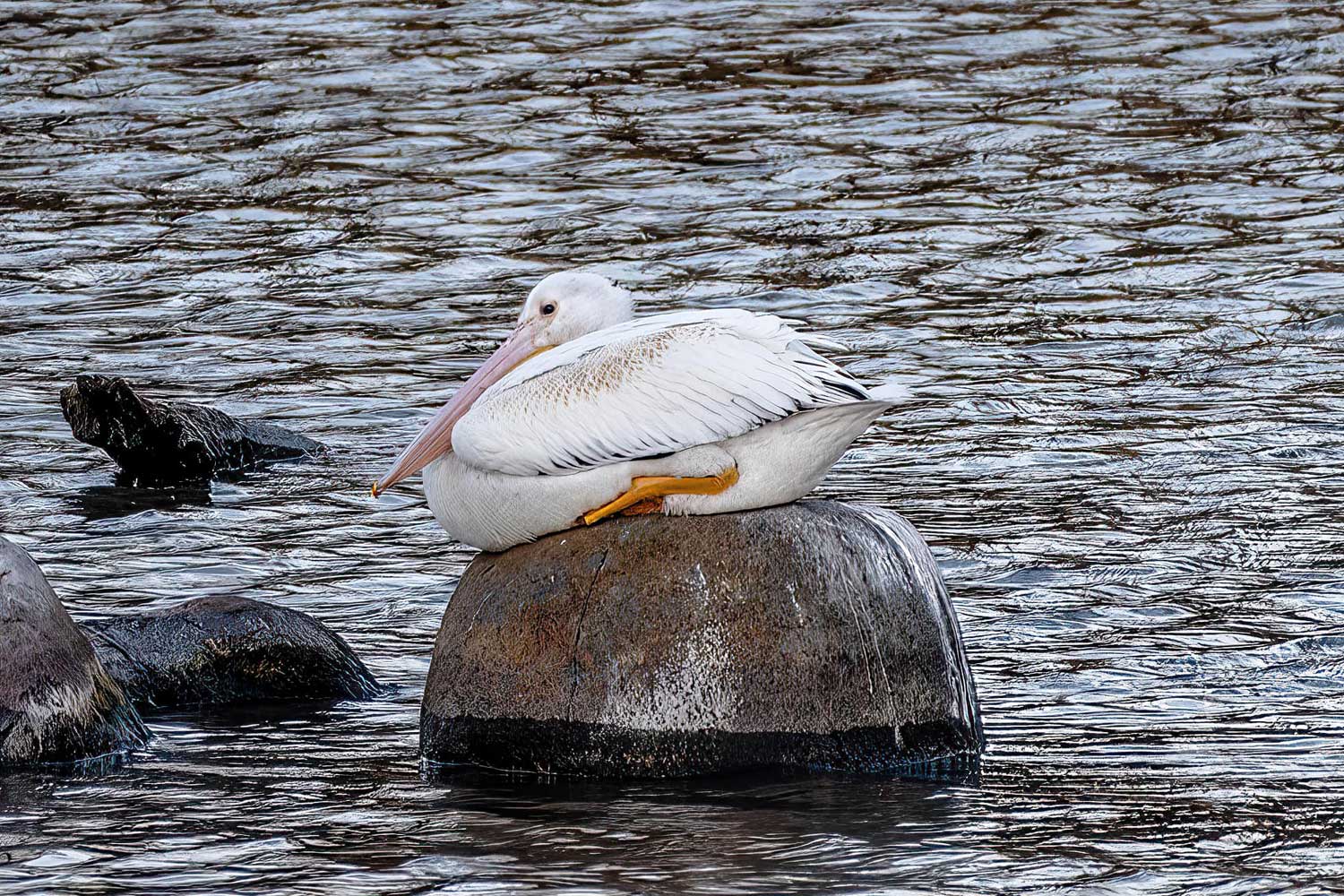Five fascinating facts about pelicans

For local bird lovers, the biannual arrival of American white pelicans in Will County is one of the most anticipated events each spring and fall. These big, white birds are hard to miss on the water, both because of their size and because they tend to congregate in groups. On land, American white pelicans look clunky and awkward, but they are much more graceful in flight or on the water, according to the Cornell Lab of Ornithology.
The pelicans are big, bulky birds, standing as much as 5 feet tall with a wingspan of as much as 10 feet, according to National Geographic. They can weigh up to 20 pounds. Compare that to another well-known big bird — the great blue heron, which typically weighs in at about 5 pounds.
The fall stopover here in Will County typically begins in early to mid-September, and they usually stick around until sometime in November. They also typically arrive here on their way north to their breeding ground sometime in March or early April, departing in May.
Their time here is fleeting, and since they don't give any advanced noticed of when they will arrive or depart, you have to seize the moment to see these birds. The waters around McKinley Woods-Kerry Sheridan Grove and Four Rivers Environmental Education Center in Channahon are the place where they are most often seen in the preserves, but they've also been spotted at Rock Run Rookery in Joliet in the past.
Here's some more fascinating facts about American white pelicans.
We're lucky to see them here
If you look at the range maps for American white pelicans, you'll see that our area is barely included in the migratory range for these birds. On many maps, the eastern edge of Illinois sits at the far east of their migratory range; on other maps, Will County and eastern Illinois aren't even included in their normal range.
They breed at very select sites — fewer than 60 in all — in Canada, Minnesota, the Dakotas and other central and north central states, Cornell Lab reports. Their biannual stopovers here are on their migrations between their northern breeding grounds and their wintering grounds along the Atlantic coast and the Gulf of Mexico.
Their bills aren't lunch boxes
Perhaps the most common misconception about pelicans is that they use their big bill pouches to store food for later, like a lunch box. In reality, pelicans eat their food when they catch it, so they have no need for food storage. Their bill pouches are big, though. They can hold up to 3 gallons of water in them, according to National Geographic.
When foraging for food, pelicans use their bill pouches to scoop up their catch — usually fish, but also crayfish, tadpoles and other aquatic creatures — and then tip their heads back to swallow their catch before flying off. They are often seen foraging in groups, forming lines or V or U shapes in the water, with heads bobbing up and down as they go in for a catch.
They buddy up with double-crested cormorants
American white pelicans are often seen in the company of double-crested cormorants. They often forage for fish together, although they don't usually eat the same fish and they don't hunt at the same depths of the water, the Cornell Lab reports. Cormorants will even build their nests and raise their young within pelican colonies.
While the two birds usually peacefully coexist, pelicans do sometimes steal food from cormorants, particularly as the cormorants return to the surface with their catch. That's not their only target, though. Pelicans are well-known fish thieves and will even steal food from other pelicans.
Their plumage has a surprise
Do you think American white pelicans have all-white feathers, like a great egret? Not so. If you only see these big birds on the water, you may think they have only white feathers, but in flight they reveal a surprise.
When pelicans spread their wings, they show off their all-black feathers at the ends and tips of their wings. In the water or even while standing on land, they look all white, save for their bright orange webbed feet and their yellowish-orange bills. If you've even seen a pelican with an unusual looking horn or bump on the top of its bill, that means it's preparing to breed. The adult pelicans develop these projections, called bill plates, in advance of breeding season.
It takes a lot of fish to raise a baby pelican
Like most birds, pelican hatchlings cannot feed themselves. Their parents forage for them, providing them food for several weeks until they can search for food on their own. Each hatchling needs about 150 pounds of food provided for them until they are old enough to feed themselves, according to Cornell Lab.
Female pelicans typically lay two eggs per brood, but only one chick usually survives. They are born tiny and featherless, with orange bodies and grayish bills and pouches. After two or three weeks, they are big enough to leave their nests, forming groups called crèches with other young pelicans. They still aren't old enough to forage on their own, however. Instead, the parents will forage and return to the crèche with food, searching among the young pelicans for their hatchlings.
